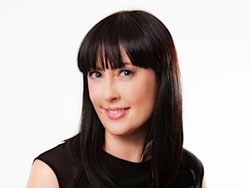A world-first national simulation project has changed the face of education and training for physiotherapy students across Australia.
The large-scale
project, which was supported under the now defunct Health Workforce Australia, rolled-out innovative simulation, using mostly professional actors as patients, into 16 physiotherapy courses across 2014 and 2015.
Subscribe for FREE to the HealthTimes magazine
Almost 1800 physiotherapy students participating in the project completed more than 13,200 days or 99,000 hours of simulation training across the three main practice areas - cardiorespiratory, neurological and musculoskeletal physiotherapy.
The groundbreaking initiative, which involved widespread support from universities, clinicians, professional bodies and students, has transformed physiotherapy education practice in Australia.
It’s also generated interest from countries, such as Ireland, the United States, Canada, Brazil and Israel, and from other allied health disciplines, such as occupational therapy and speech pathology.
FEATURED JOBS
Frontline Health Melbourne
Frontline Health Melbourne
Professor Tony Wright, from
Curtin University’s School of Physiotherapy and Exercise Science, guided the multi-million dollar project with a team including Dr Penny Moss, Dr Kate Watson and Stephen Rue. The overall project team included key representatives from each of the 16 participating universities.
Professor Wright said the project has been a major success, with simulation training now provided as part of the education program across all of Australia’s 19 physiotherapy courses.
“Initially there was a bit of resistance and reluctance from people in terms of thinking that working with actors can’t be as good as working with proper patients,” he said.
“As people actually got into the project and began to experience it and began to see the benefits of being able to use simulation, both on the part of the students and the staff, people really strongly embraced it as an approach.
“It’s now become much more embedded as an approach across all of the physiotherapy courses, and in different parts of courses - both students early on in the course as well as students in the clinical practice phase.”
Under the project, leading physiotherapy clinicians and academics developed 45 simulated scenarios.
Students engaged with actors and high fidelity mannequins portraying patients, while accessing chart histories, X-rays and test information developed for the scenarios, to practise patient assessment and management in clinical environments for the five-day training sessions.
More than 300 physiotherapy educators, with no prior experience in simulation training, were also up-skilled in clinical simulation, while universities were able to tap into resources to inject into equipment to create the simulated learning environments.
Professor Wright, a member of the
Australian Physiotherapy Association (APA), said the highly collaborative project created a more effective learning environment for physiotherapy students.
“When students move out into traditional clinical settings, the focus in those facilities is always on patient care, and students are well supported within those facilities, but at times patient care has to take priority over student learning, which is completely appropriate,” he said.
“At times, that can create limitations for students so they may not, for example, have the opportunity to work with patients who are particularly ill…some parts of their treatment may be curtailed or limited because of the patient’s condition.
“What happens in simulation is that the whole setting is focused on the student learning so there are no limitations imposed on the student.”
Professor Wright said simulation also enables students to “rewind and replay” clinical scenarios.
“So if the student is working with a particular patient and, for example, they get something wrong…the student or the supervisor can call a time out,” he said.
“There can be some discussion of the situation and they go through it all again, and have the opportunity to replay things, which doesn’t really happen in the clinical setting.”













